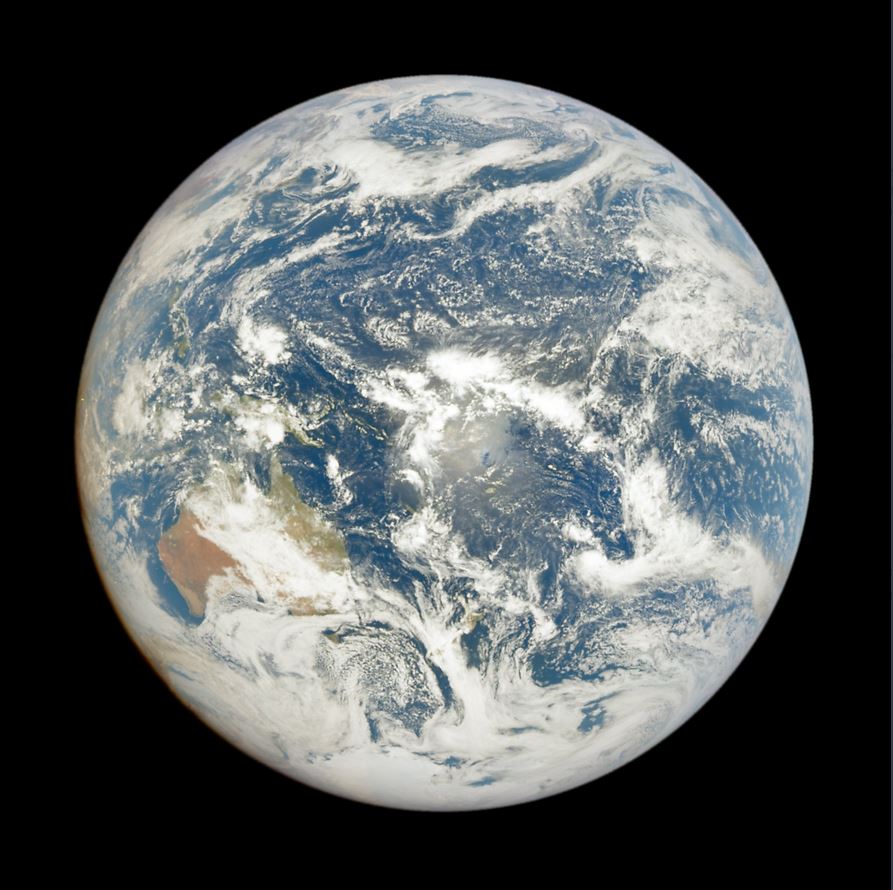
August 16, 2024 by Evan Gough
Collected at: https://www.universetoday.com/168123/ocean-salinity-affects-earths-climate-how-about-on-exoplanets/
There’s a link between Earth’s ocean salinity and its climate. Salinity can have a dramatic effect on the climate of any Earth-like planet orbiting a Sun-like star. But what about exoplanets around M-dwarfs?
Every planet has a measurable albedo, the percentage of starlight it reflects back into space. It’s measured on a scale from 0, which would be a black object that reflects no light, up to 1.00, an object that reflects all light. Since a higher albedo reflects more starlight, it has a cooling effect on an object’s climate. In our Solar System, Saturn’s moon Enceladus has the highest albedo. Enceladus is covered in bright, reflective ice that reflects most of the sunlight that reaches it. (Note that there are different measurements for albedo, and they can be quite different, leading to some confusion.)

Mercury has the lowest albedo because it’s covered in mostly dark rock. (Objects like comets can have even lower albedos.)
Earth’s albedo is about 0.3, largely due to our planet’s cloudy atmosphere. The ice in Antarctica, Greenland and the seasonal pack ice in the Arctica also contribute. Earth’s albedo changes throughout the seasons as ice expands and recedes. In short, Earth’s albedo helps regulate the planet’s climate.
The ocean’s salinity levels affect how much sea ice forms and, in turn, affects Earth’s albedo. The more salt there is, the more the freezing point drops, making it harder for ice to form. Higher salinity means less ice, which means the albedo is lower and less sunlight is reflected back into space.
But how would ocean salinity affect exoplanets that orbit stars which are different from our Sun? That’s the question behind new research titled “Climatic Effects of Ocean Salinity on M Dwarf Exoplanets.” The lead author is Kyle Batra from the Department of Earth, Atmospheric, and Planetary Science at Purdue University. Batra is also a member of the NASA Network for Ocean Worlds Exo-oceanography Team.
M Dwarfs are also called red dwarfs, and their light is different from the Sun’s. Plenty of research has been done into ocean salinity and its overall effect on Earth’s climate. According to the authors, research is lacking when it comes to red dwarf exoplanets. “However, how ocean composition impacts climate under different conditions, such as around different types of stars or at different positions within the habitable zone, has not been investigated,” the authors write.
M dwarf exoplanets are particularly important when it comes to the study of exoplanets and their potential habitability. M dwarfs are low-mass stars that have extremely long, stable lifespans. That’s a benefit for potential habitability. M dwarfs are also the most plentiful type of star, so logic says they host the most rocky planets, and observations show us they host few gas giants.
The researchers worked with several key variables in their models, including how instellation changes over a star’s lifetime.

The researchers used an ocean-atmosphere general circulation model (GCM) to investigate how M dwarfs and G-type stars like our Sun respond to ocean salinity. The results show that stars like our Sun respond more dramatically to changes in ocean salinity. “We find that increasing ocean salinity from 20 to 100 g/kg in our model results in non-linear ice reduction and warming on G-star planets, sometimes causing abrupt transitions to different climate states,” they write.
Just as on the real Earth, the G-type star simulations showed that sea ice was restricted to high latitudes and that its coverage decreased as the salinity rose. Coverage went from 19.5% at 35 grams of salt per kg down to 3.5% at 100 grams per kg. That’s a sharp transition.
Transitions were less abrupt on M dwarfs. “Conversely, sea ice on M-dwarf planets responds more gradually and linearly to increasing salinity,” they write.

The researchers also determined how salinity and ice cover affected surface temperatures. On Earth, the average surface temperature rose from 8 Celsius to 14 C as salinity increased from 35 to 100 grams/kg. M-dwarf planets didn’t show a similar rise in surface temperature.
“Moreover, reductions in sea ice on M-dwarf planets are not accompanied by significant surface warming as on G-star planets,” they explain.

Planets in habitable zones around M-dwarfs share another characteristic. Since the habitable zone around an M-dwarf is so much closer to the star than around a Sun-like star, many of the planets are expected to be tidally locked. That affects everything about their climates.
“In this scenario, sea ice is even less coupled to planetary albedo than in our simulations with Earth-like rotation because the ice on the night side would not interact with incoming radiation,” the authors explain.
In a tidally locked scenario, oceanic and atmospheric mixing has more dynamic variables. “Under different rotation and circulation regimes, the climate sensitivity to salinity may, therefore, differ,” the researchers explain. They leave it to future research to investigate those scenarios.
These results are very interesting, but unfortunately, an opportunity to test them against observations won’t arise any time soon because we can’t remotely sense ocean salinity. In fact, we’re not even certain that what seem like exoplanets with oceans do, in fact, have oceans. But at least this work shows what effect ocean salinity can have on the plentiful rocky planets that orbit the galaxy’s M-dwarfs.
“This is an encouraging result that suggests uncertainties regarding exo-ocean salinity are less of a concern for understanding the climates and habitability of M-dwarf planets compared to G-star planets,” they conclude.

Leave a Reply